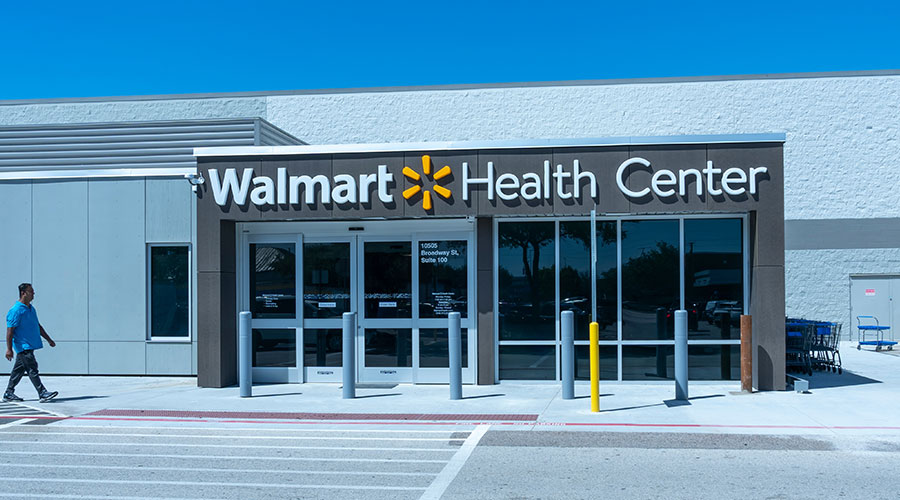On April 30, 2024, Walmart announced it would be closing all its clinics in the United States. Many in the healthcare industry were surprised and even confused by the announcement, as not a lot of them expected the abrupt closure.
Peter Follows, CEO and co-founder of Carpedia, says he thought Walmart’s initial vision was interesting, as they were trying to create accessible healthcare for an underserved portion of the population by using their brand.
“When I originally heard the concept, I wondered if maybe there was a mismatch between healthcare consumers and the brand,” says Follows. “However, I think that there was a genuine vision to provide healthcare services to that particular segment of the population.”
While Follows mentions Walmart could have opted for a virtual type of offering, they went with brick-and-mortar outlets that would appeal to their consumer base. He adds that Walmart was well-positioned to provide this kind of service, especially with the population density of the areas surrounding them.
“I believe some of their original plans were that they believed that the increase in use of those retail healthcare outlets would help increase the amount of money that people were spending,” says Follows. “You might even have some knock-on effects, for example with dietitians leading people to various parts of the grocery store. I am not sure that came through, though.”
However, Walmart did stumble, and Follows thinks the final decision came down to a fundamental profit proposition where they could not make it economically feasible.
Walmart gave an official reason why they closed their health centers in the initial announcement: “This is a difficult decision, and like others, the challenging reimbursement environment and escalating operating costs create a lack of profitability that make the care business unsustainable for us at this time.”
Barriers to entry
The healthcare market can be difficult to break into, especially due to the long-established entities of the industry and its infrastructure, says Follows. New entrants are presented with the daunting task of going up against the seasoned juggernauts of healthcare.
“It is really the size and the power of some of the incumbent suppliers,” says Follows. “You also have very large insurance companies and government reimbursement programs. Also, you have a need for skilled labor, which adds cost to all aspects of trying to operate some of these facilities.”
One area Follows believes did significant damage to Walmart’s plans was the impact of COVID-19 on the entire healthcare industry. The pandemic caused severe labor shortages which, according to Follows, caused many employees to be overworked and ultimately leave the industry. This would exacerbate the preexisting labor force shortages and make staffing healthcare facilities more challenging.
“With the shortages just rising, it causes some of your labor costs to go up, which makes the whole proposition of breaking into healthcare difficult for new entrants,” says Follows. “That is, unless you already had the very large scale to do so.”
One of things Walmart attempted to do in its vision was to scale its practices, however, even they had difficulty despite the size of their business. Follows thinks this is one of the main reasons Walmart made the decision to close its clinics.
The aftermath of the closures
While there are barriers to entry with healthcare, it is not stopping other companies from trying to enter the fray. Companies such as Amazon, Walgreens, CVS and even Best Buy are looking into possible healthcare ventures. However, their way into the industry is going to be different than Walmart’s, says Follows.
Their healthcare offerings are mainly centered around transactional relationships. Follows notes when a company decides to get into primary care, that transactional relationship turns into a relationship that puts added pressures on the retail outlet and impacts the physical footprint.
“You either have to commit to it and invest in the space and the equipment or not,” says Follows. “I think that is what has slowed some of those chains into looking at a broader scale retail healthcare offering.”
In terms of Walmart ever trying again, Follows does not see them doing it anytime soon due to the large scale of the project and the available funds being reinvested elsewhere in the company.
“There were some assumptions made with the Walmart build out that they would be able to appeal to an existing population that was already physically locating their stores,” says Follows. “I think there was some disappointment in terms of their ability to translate their existing business into business for these healthcare facilities. If there is any lesson to be learned, it is trying to make sure that the demand properly matches the supply and whatever location you are trying to establish yourself in.”
Jeff Wardon, Jr. is the assistant editor for the facilities market.

 Building Sustainable Healthcare for an Aging Population
Building Sustainable Healthcare for an Aging Population Froedtert ThedaCare Announces Opening of ThedaCare Medical Center-Oshkosh
Froedtert ThedaCare Announces Opening of ThedaCare Medical Center-Oshkosh Touchmark Acquires The Hacienda at Georgetown Senior Living Facility
Touchmark Acquires The Hacienda at Georgetown Senior Living Facility Contaminants Under Foot: A Closer Look at Patient Room Floors
Contaminants Under Foot: A Closer Look at Patient Room Floors Power Outages Largely Driven by Extreme Weather Events
Power Outages Largely Driven by Extreme Weather Events